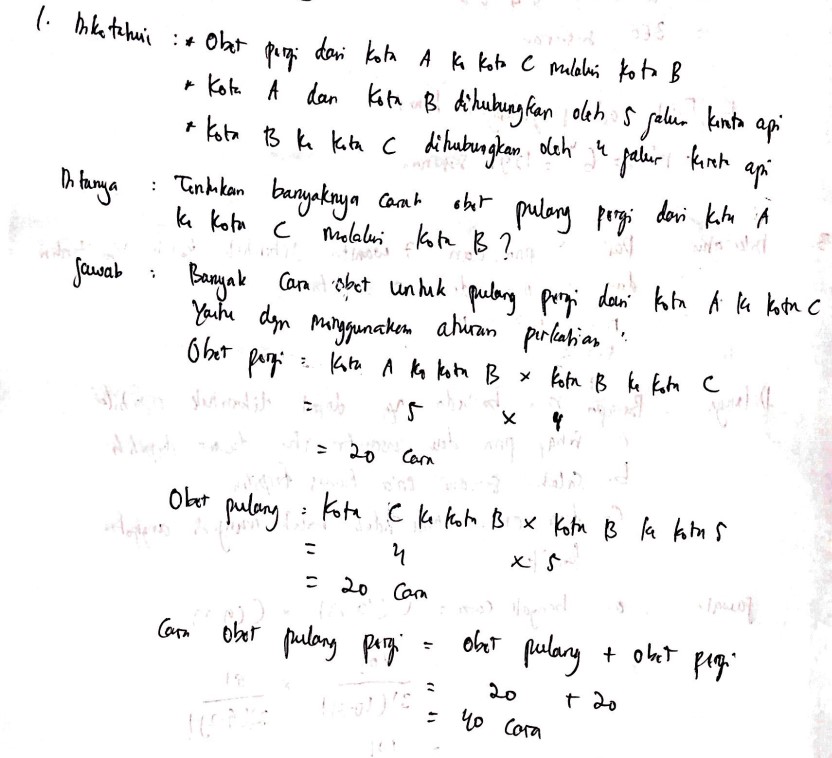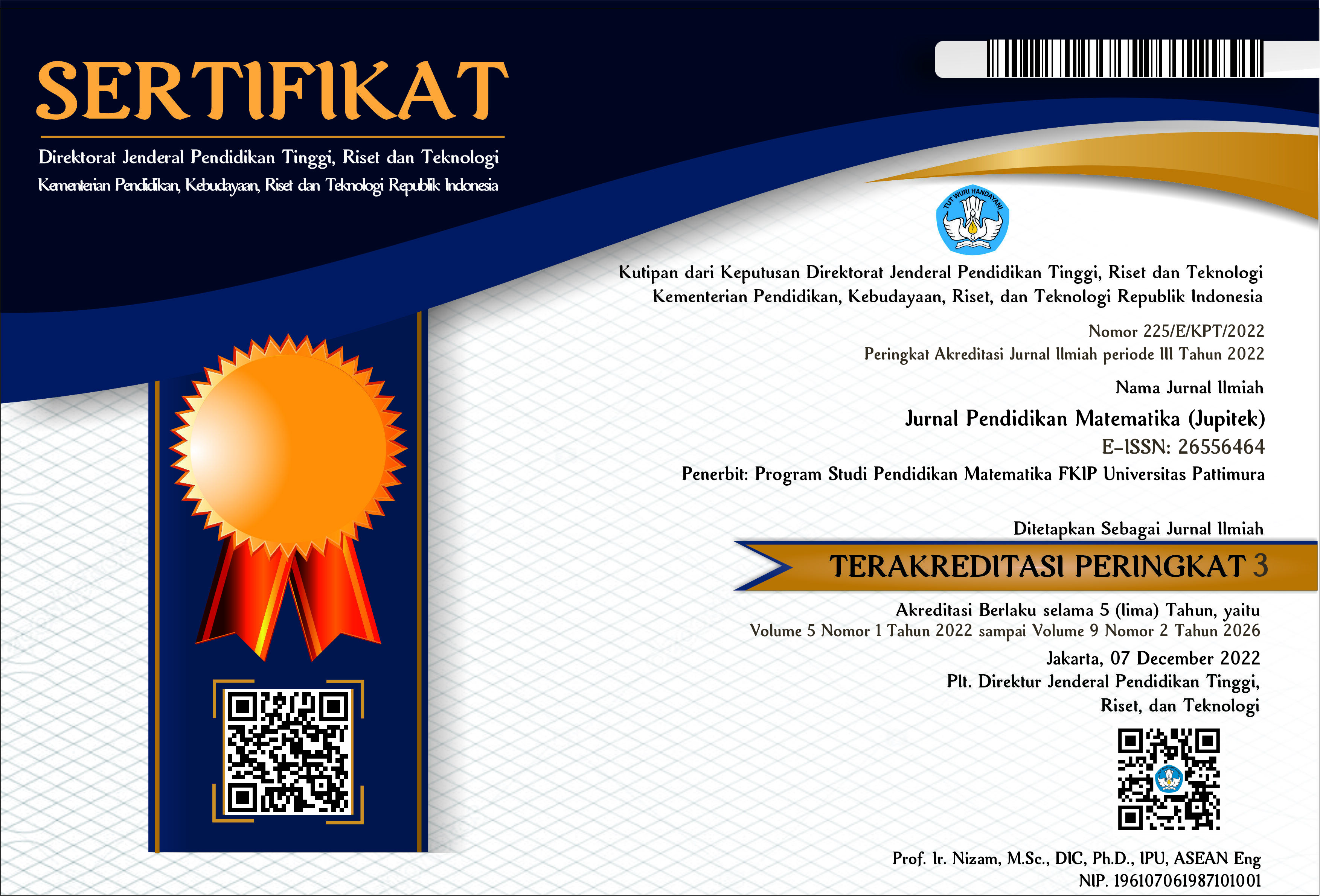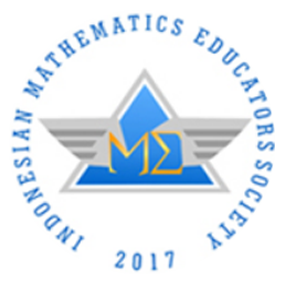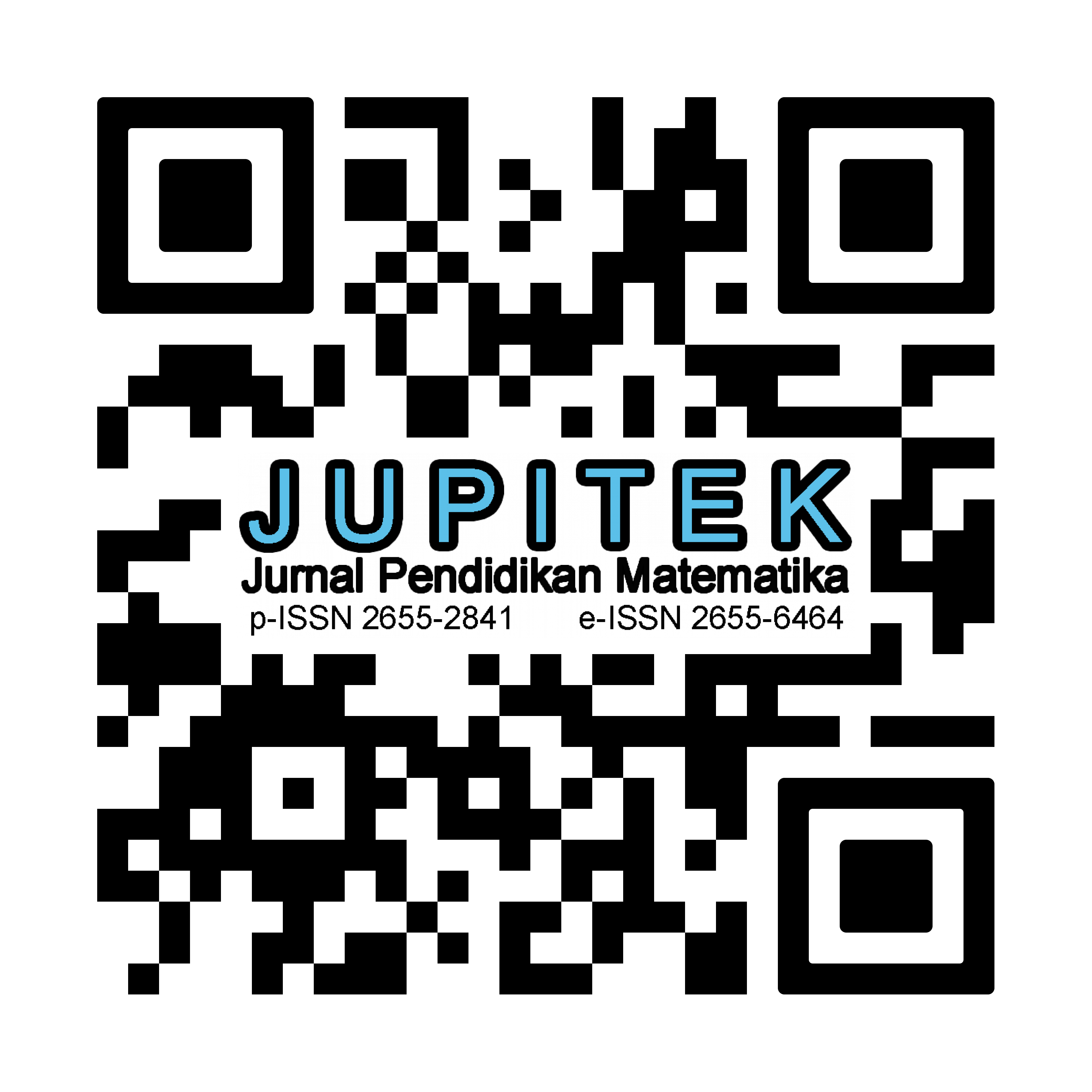KEMAMPUAN REPRESENTASI MATEMATIS CALON GURU MATEMATIKA PADA MATA KULIAH TEORI PELUANG
Abstract
In understanding mathematics learning, representation is considered an entry point in solving various complex mathematical problems. The ability of mathematical representation is related to the expression of mathematical ideas using various ways, including written language, spoken language, pictures, symbols, examples, diagrams, graphs, or other real examples as representations. The research design used is mixed research (Mixed Method). The subjects in this study were 17 prospective mathematics teacher students, but then 3 (three) people were selected as subjects to be interviewed. Consists of subjects with high category (S1), subjects with medium category (S2), and subjects with low category (S3). Data collection was carried out using test instruments in the form of description questions in the probability theory course. From the test results, after being examined, students were selected to represent each category. Furthermore, by using the results of student tests, interviews were conducted to compare the results of interviews with student answers. The results of the written test and the results of the interview test were then analyzed to determine the student's representational ability. The results of this study indicate that students' mathematical representation skills in the probability theory course are still relatively low, this can be seen in 3 (three) subjects after matching the results of the written test and the results of the interview test. Individuals with high categories can meet the indicators of expression representation or mathematical equations and verbal representations. Subjects in the medium category were able to fulfill the indicators of mathematical representation or expression. Low subjects were not able to fulfill one of the three indicators of mathematical representation ability
Downloads
References
Dewi, P. S., & Septa, H. W. (2019). Peningkatan Kemampuan Pemecahan Masalah dan Disposisi Matematis Siswa dengan Pembelajaran Berbasis Masalah. Mathema Journal, Universitas Teknokrat Indonesia, 1(1): 31–39. https://doi.org/10.33365/Jm.V1i1
Fatri, F. F., Maison, M., & Syaiful, S. (2019). Kemampuan Representasi Matematis Siswa Kelas VIII SMP Ditinjau dari Gaya Kognitif Visualizer dan Verbalizer. Jurnal Didaktik Matematika, 6(2), 98–111. https://doi.org/10.24815/jdm.v6i2.14179
Goldin, G. A. (1998). Representational systems, learning, and problem solving in mathematics. The Journal of Mathematical Behavior, 17(2), 137–165. https://doi.org/10.1016/S0364-0213(99)80056-1
Hidayat, W., & Sari, V. T. A. (2019). Kemampuan berpikir kritis matematis dan adversity quotient siswa SMP. Jurnal Elemen. 5(2) : 242 – 252. https://doi.org/10.29408/jel.v5i2.1454
Kartika, Y. (2018). Analisis kemampuan pemahaman konsep matematis peserta didik kelas vii smp pada materi bentuk aljabar. Jurnal Pendidikan Tambusai. 2(4): 777-785. https://jptam.org/index.php/jptam/article/view/25/21
Komalasari, L. I. (2021). Analysis of Students’ Mathematical Representation Ability In Understanding the Material System of Linear Equations of Two Variables. Jurnal LENTERA: Jurnal Studi Pendidikan. 3(2) : 37-54 https://doi.org/10.51518/lentera.v3i2.51
Kumalasari, T. (2020). Analisis Kemampuan Representasi Matematis Siswa Dalam Menyelesaikan Soal Statistika Dan Peluang. Jurnal Matematics Paedagogic, 6(2: 87-94. https://doi.org/10.36294/jmp.v6i1.1366
Kusumawardani, H. D., & Mega, T. B. (2021). Representasi Matematis Peserta Didik Dalam Menyelesaikan Masalah Matematika Ditinjau Dari Gaya Kognitif Impulsive-Reflective. MATHEdunesa, 8(2). 110-116. https://doi.org/10.26740/mathedunesa.v8n2.p110-116
Mataheru, E. E., Ratumanan, T. G., & Ayal, C. S. (2021). Analisis Kemampuan Representasi Matematis Peserta Didik Pada Materi Program Linear. Jurnal Pendidikan Matematika (Jupitek) 4(2): 55–67. https://doi.org/10.30598/jupitekvol4iss2pp55-67
Muhamad, N. (2016). Pengaruh Metode Discovery Learning untuk Meningkatkan Representasi Matematis dan Percaya Diri Siswa. Jurnal Pendidikan Universitas Garut, 9(1), 75–90. http://dx.doi.org/10.52434/jp.v9i1.79
NTCM. (2000). Principles and Standards for School Mathematics. Reston, VA: NCTM.
Puspaningtyas, N. D. (2019). Berpikir Lateral Siswa SD dalam Pembelajaran Matematika. Mathema Journal. 1(1): 24-30. https://ejurnal.teknokrat.ac.id/index.php/jurnalmathema/article/view/351/245
Rahmadana, dkk (2022). Analisis Kemampuan Representasi Matematis pada Materi Barisan dan Deret Berdasarkan Gaya Belajar. Jurnal Riset Pendidikan Matematika Jakarta. 4(1): 46-59. https://doi.org/10.21009/jrpmj.v4i1.23025
Ratumanan, T. G & Laurens, T. (2015). Penilaian Hasil Belajar pada Tingkat Satuan Pendidikan. Pensil Komunika
Sukestiyarno. (2021). Metode Penelitian Pendidikan (Cetakan Ke). Alen Print.
Sulastri, S., Marwan, M., & Duskri, M. (2017). Kemampuan Representasi Matematis Siswa SMP Melalui Pendekatan Pendidikan Matematika Realistik. Beta Jurnal Tadris Matematika, 10(1), 51-69. https://doi.org/10.20414/betajtm.v10i1.101
Ulya, H., & Rahayu, R. (2020). Kemampuan Representasi Matematis Field Intermediate Dalam Menyelesaikan Soal Etnomatematika. AKSIOMA: Jurnal Program Studi Pendidikan Matematika, 9(2), 451–466. https://doi.org/10.24127/ajpm.v9i2.2695
Wikipedia. (2022). Teori peluang. https://id.wikipedia.org/wiki/Teori_peluang

Copyright (c) 2022 Marthinus Yohanes Ruamba, Zaenuri Mastur, Iqbal Kharisudin

This work is licensed under a Creative Commons Attribution-NonCommercial-ShareAlike 4.0 International License.
License and Copyright Agreement
By submitting a manuscript to Jurnal Pendidikan Matematika (JUPITEK), the author(s) certify and agree to the following terms:
- Originality and Authority: The submitting author is authorized by all co-authors to enter into this agreement. The manuscript describes original work that has not been published previously in a peer-reviewed journal, nor is it under consideration for publication elsewhere.
- Approval: Its publication has been approved by all author(s) and by the responsible authorities of the institutions where the work was carried out.
- Rights: The authors secure the right to reproduce any material that has already been published or copyrighted elsewhere.
- Licensing and Copyright: Authors retain the copyright to their work.
- License Grant: The authors grant Jurnal Pendidikan Matematika (JUPITEK) the right of first publication, with the work simultaneously licensed under the Creative Commons Attribution-NonCommercial-ShareAlike 4.0 International (CC BY-NC-SA 4.0).
- Self-Archiving: Authors are permitted and encouraged to deposit the published version of their article in institutional repositories, on their personal websites, and other academic platforms, with proper acknowledgment of its initial publication in Jurnal Pendidikan Matematika (JUPITEK).





.png)


